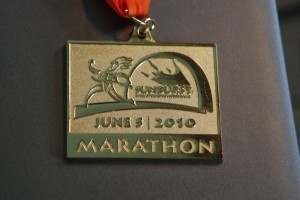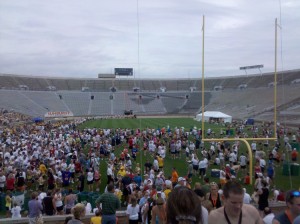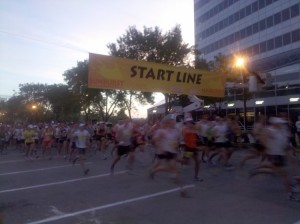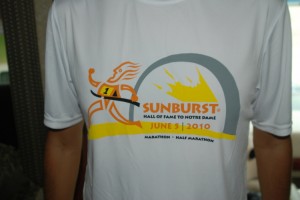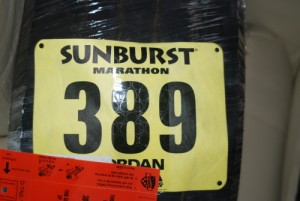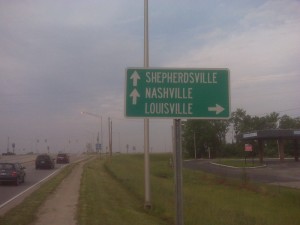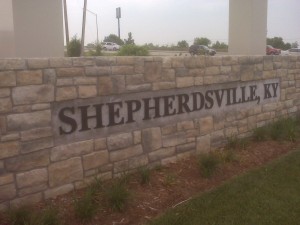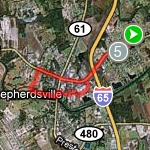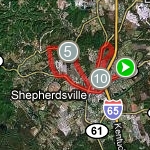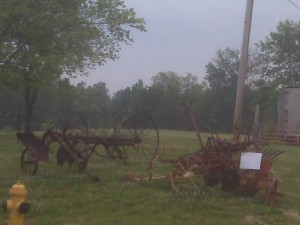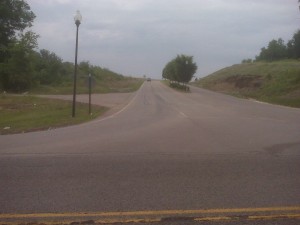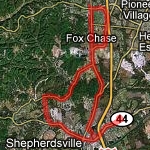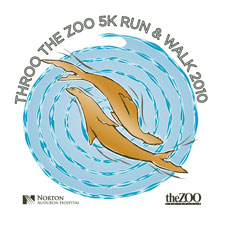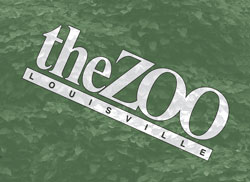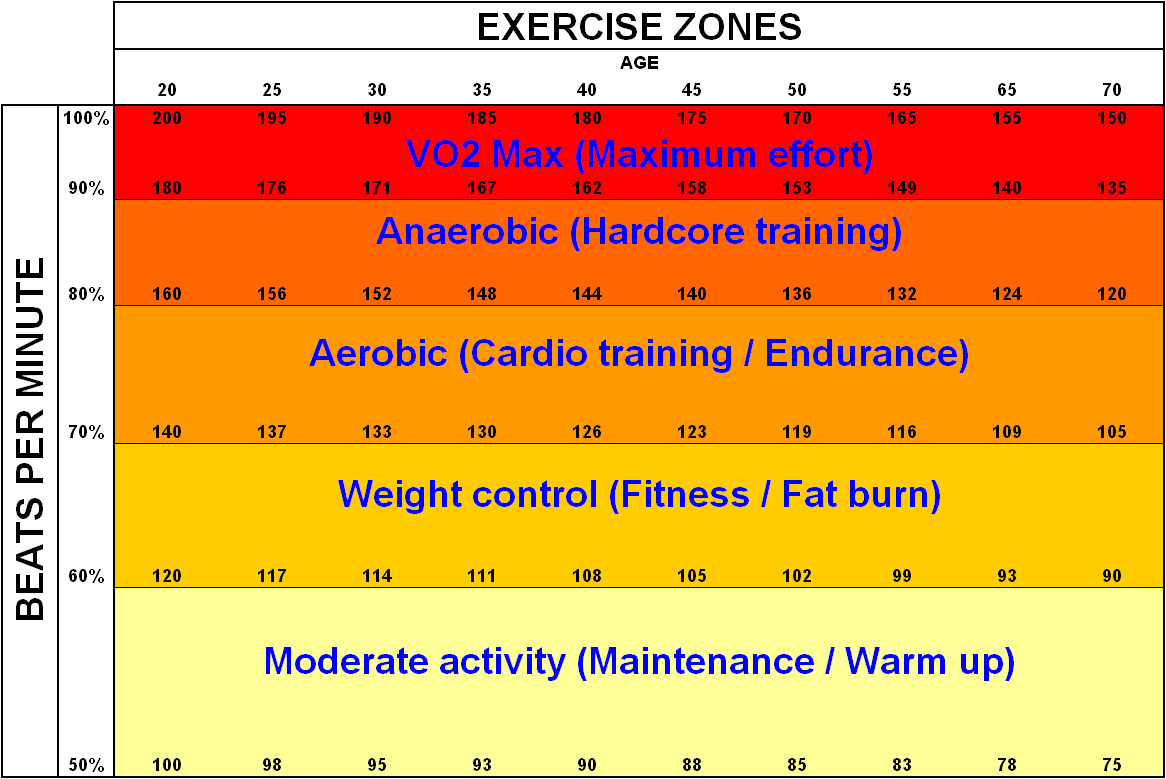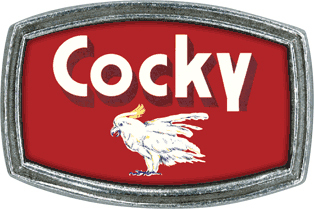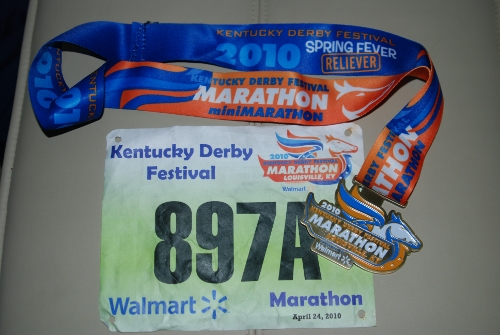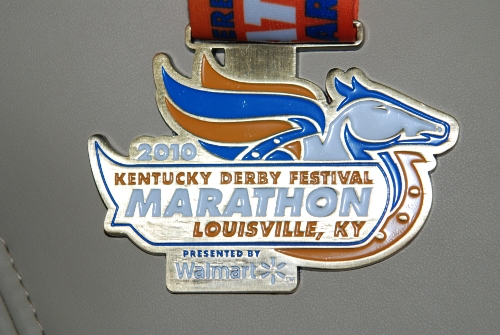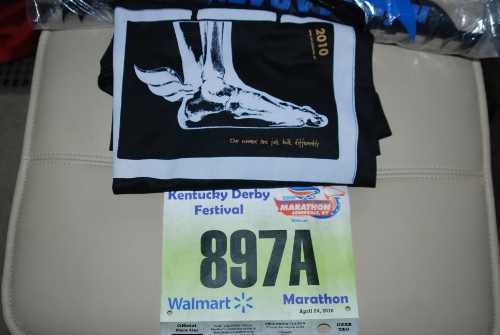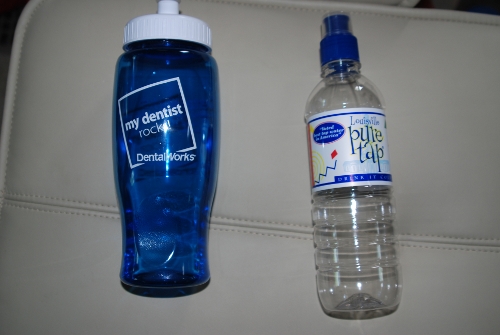Well that was humid. But oh so awesome. I didn’t do great, but I had a great time, am very happy with my performance, and am glad I signed up. Had a great time, though I still have no idea why it’s called the Sunburst Races. Let’s start with the race itself.
The Race
First off, a call to all you speedy people out there who can run much faster than me: if you can consistently do a sub-3 hour marathon, you can potentially win this race. If you’re a woman, you almost certainly can. They don’t have huge prize purses, but how awesome would it be when that smug git in your office asks if you won the marathon this weekend and you can dryly reply “Yes.”? This year was probably a bit slower than typical due to the humidity (94%!), but the top three men were 2:48:45, 2:50:33, and 2:54:21 with the women at 3:04:58, 3:12:45, and 3:15:48.
If you missed yesterday’s pre-race post, the Sunburst Races are six races in one (or seven if you count the Friday night Family Fun Walk (“about” 2 miles). The Marathon, Half Marathon, Wheelchair Half Marathon, 5k, 5k Walk, and 10k each have their own starting gun, spread out across three hours, and all run from the College Football Hall of Fame to Notre Dame Stadium. If you know me, or even have a vague knowledge of me, you know I’m certainly not a huge sports fan, and certainly don’t follow college sports, but I’ve got to say that a finish line on the 50 yard line of what I believe is the largest1 college football stadium in America is pretty frickin’ cool. As for finish line experiences, I’d say it’s my second favorite, just behind Hayward Field in Eugene.
But the finish line is no place to start a race report. Let’s start at the start line, right?
 As much as I was wary of the spread out start times, it did make for wicked easy corralling. There was literally nobody lined up when we got there. The Hall of Fame has a large astroturf “field” (about 30 yards, maybe) in front of the building, which was used for back check, last minute bib pickup, and general lounging about to hydrate and/or stretch. Just 20 yards away was the start line, which, fortunately, the wheelchair guys knew which way to line up in front of, so they could set a good example for the rest of us. There were only 744 marathoners (well, finishers at least), so it was a quick and easy line up. Sunburst doesn’t have pace groups, but they had volunteers with full minute pace increments march out in to the field to get people lined up in the appropriate order. Which was awesome genius. Even if nobody lined up with the lonely five minute mile guy.
As much as I was wary of the spread out start times, it did make for wicked easy corralling. There was literally nobody lined up when we got there. The Hall of Fame has a large astroturf “field” (about 30 yards, maybe) in front of the building, which was used for back check, last minute bib pickup, and general lounging about to hydrate and/or stretch. Just 20 yards away was the start line, which, fortunately, the wheelchair guys knew which way to line up in front of, so they could set a good example for the rest of us. There were only 744 marathoners (well, finishers at least), so it was a quick and easy line up. Sunburst doesn’t have pace groups, but they had volunteers with full minute pace increments march out in to the field to get people lined up in the appropriate order. Which was awesome genius. Even if nobody lined up with the lonely five minute mile guy.
We started nice and promptly at six, after a trumpet solo Star Spangled Banner by a local college freshman2. No jockeying for position, no people getting trampled or run off the course, just a clean, smooth start with fans all around. The course starts southbound for three blocks before a quick turnaround to head north two blocks parallel, where many spectators had shimmied over to in order to catch another pass. The first marathon I ever did (Austin 2007) started the same way and I think it’s a great practice that all course planners should consider.
It must be humid during this race on a regular basis, because it quickly became clear why they have water and Gatorade every two miles along the course. Tons of awesome volunteers staffed each water station, all very enthusiastic and encouraging, no matter how miserable we looked in the squishy air. They also had four Red Cross first responders at each station in addition to the full medical tent at the finish line. All in all, they definitely had good organization on the water stops. The one down side, which didn’t affect the 744 of us all spread out, was that they weren’t the quickest drink preppers; when the larger Half Marathon crowds came through, there was some struggling to keep up with demand. I learned post-race that a few stations also unfortunately ran out of not only Gatorade, but water as well, by the time the slower runners came through on the Half.
My favorite volunteers were of course the two teenage boys – maybe 14ish – on one of the corners near mile 11 (which was later mile 24.75ish) who were put in charge of Big Cardboard Arrow Holding, one of the most crucial jobs at this complex corner. They were clearly told by someone – perhaps a parent or volunteer team leader; maybe one and the same – to say “encouraging things” to runners as they came by. Almost all the volunteers were doing this, when they weren’t shouting “Gatorade! Gator here!” and “Water! Gotcher water!”, because they’re awesome. But the timeless angst of 14 year olds everywhere made it so much more enjoyable. Their words said “looking good keep going you can do it keep it strong go runners looking good”3 but their tones of voice and eyes said “why am I here why are you here what’s wrong with you people I hate this can I go home god my mom’s a slavedriver.” I don’t think they realized quite how they were managing to bring a smile to so many faces.
Have you been paying attention? Did you catch how I mentioned that all the races start and end at the same place? Been wondering how that works? (Why didn’t you just check out the maps? M H 10 5) The 5k goes pretty much straight from start to finish through downtown. The 10k takes a little detour. The half takes a larger detour, heading out to the middle of nowhere and then coming back in. The marathon heads up along the river to a park way off in the northwest, then back through town (across the 5k mob – eek!) and then out and back along a riverfront path to the east of downtown before heading back up to the stadium. It was a really nice running environment instead of just roads, even if we did collide with the 5k walkers for most of the last mile and a half (which is half the race for them!).
Coming in to Notre Dame stadium was pretty much awesome. It was a bit of a drag seeing it, thinking you’re heading in, and then having to pass most of it to get to the entry tunnel on to the field, but it was oh so worth it. There’s no mile 26 sign, but you see the half marathon mile 13 sign right before you turn in to the tunnel, which is all downhill from the road to the field, so everyone (except the walkers, obviously) just opened it up and finished strong. Notre Dame has some rules to protect the turf – specifically, once you leave you can’t come back in and no spectators allowed – but there was plenty of food and drink to recover with and tons of room to stretch. No bathrooms on the field, obviously, which is how they keep you from just hanging out all day (though my wife managed to hold on long enough to greet me at the finish).
All in all, a very well run race which was a lot of fun. Even if you’re not within range of a winning time, I’d still recommend it. Especially if you’re a big football geek. That’s one impressive stadium.
The Keath
I had three goal tiers for this race;
- Qualify for Boston. A wicked stretch for me, since it would require me to PR by 20 minutes.
- Set a Personal Record.
- Be honest enough with myself to pull back early if it doesn’t look like 1 or 2 are possible, rather than stubbornly persisting in an unattainable goal and crashing and burning again. I’m running Grandma’s Marathon in two weeks as my “backup” attempt, so the idea was not to burn out on this one and leave myself unable to try anything at Grandma’s.
I mentioned it was humid, right?
After realizing that nobody lined up with the five minute mile group and very few admitted to a six minute mile pace, the race director had us all shimmy forward to fill in the huge gap before the start line. I thought I was still with the 7 minute mile people, but I apparently got a little ahead of them. By a quarter mile I realized I was going way too fast and tried to pull back, dropping from one cluster of people and then hanging on to the next one to catch up with me in the hopes that they were going a steady pace at or near 7:15 miles. It took me three miles to even out and I was feeling good up to that point.
I ran with a guy from Cincinnati for a while and we chatted for a bit about our goals and adjusting them for the heat. I hadn’t realized it, but at that point I had already decided that goal 1 was not in the cards. I figured I’d push half way at my goal pace and then pull back to 7:45 or so and shoot for a balance finish around my 3:29 PR. He apologized a couple of times in case he was holding me back, but he certainly wasn’t. By the 10k mark I realized that I needed to let him go ahead and not be stupid about holding the 7:15 pace too long.
Kryten, man, change of plan!
And then I went Zen. I didn’t look at my watch from the 10k mark until maybe mile 15 or 16. I didn’t worry about pace – I was just treating it as a long training run for Duluth. I walked every aid station and took at least one cup of Gatorade and water. I let the people running even 8:00 miles pass me. I let the people running even 9:00 miles pass me. I let the people running even 10:00 miles pass me. It was that kind of day. I mentioned it was humid, right? 94%? Yeah. My splits varied from 8:00 even to upwards of 11:00.
I caught up with (or maybe fell back to) a couple of women who were running together, but one of them hurt her hip and was really struggling. We ran together for a while trying to encourage each other while her friend went on ahead. When we got to the gun clock at mile 20 and saw it read 2:45, we were pretty encouraged. I don’t know about her normal pace, but for me a half hour 10k would be rough but attainable, a 45 minute 10k was certainly feasible, and an hour 10k was nearly certain. I would be incredibly happy with a 3:45, especially given my goal 3 approach for the majority of the race. Less than a year ago my PR was 3:44, which I had to work really hard to attain, so in context “settling” for a 3:45 would be a huge improvement.
My run buddy eventually had to fall back a bit, and I actually ended up catching up with her friend in the last couple of miles. 3:45 was certainly in sight, and she had the same goal; she “had” to hit 3:45. She was worrying about the lack of a 26 mile marker, but I pointed out the half marathon 13 marker and was hoping we all had the same finish line. I did my daily good turn by being her personal cheerleader through to the finish. Turns out that she must be somewhere between 35-39, because her goal was for a Boston qualifying time. And we made it! My chip time was 3:45:12 and her’s (she’s apparently named Thuy) was 3:45:11. So maybe not my BQ goal, but someone hit their goal today, which is pretty awesome. Congrats Thuy!
And I’m pretty darn proud of myself for not pushing too hard and just letting myself enjoy the race at a comfortable pace. A time that was really tough for me a year ago is comfortable now. And it was good enough for 17th in my age group, the 113th, and 140th overall. I’ve no regrets and am quite happy with that. It’s good to have goals that matter.
Tomorrow we drive to Duluth. So long, Indiana. G’night!
